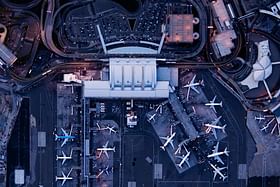By 2040, Indian aviation is predicted to accommodate 430 million additional air passenger journeys compared to 2019.
Here’s a look at some major airports that are inching closer to completion and expected to begin operations in the coming years.
The civil aviation industry in India has experienced remarkable growth in recent years and has emerged as one of the fastest growing industries in the country.
The industry can be categorised into scheduled air transport services (domestic and international airlines), non-scheduled air transport services (charter and air taxi operators), and air cargo services (transportation of cargo and mail).
According to IATA’s projections, India’s aviation industry is expected to grow at a CAGR of 5.8 per cent for the next two decades. By 2040, Indian aviation is predicted to accommodate 430 million additional air passenger journeys compared to 2019.
Currently, India has 131 operational airports, including international, domestic, and custom airports.
To cater to the increasing demand for air travel, it is of utmost importance to augment the airport infrastructure capacity in the country.
Recent Advancements In India’s Airport Infrastructure
Last week, Delhi’s Indira Gandhi International (IGI) Airport achieved a significant milestone by launching dual elevated Eastern Cross Taxiways and the fourth runway, becoming the first airport in India to have four runways and an elevated taxiway.
As the country’s largest airport, IGI handles more than 1,500 aircraft movements daily.
Further, in line with the goal of enhancing connectivity infrastructure, the new Integrated Terminal Building of Veer Savarkar International Airport in Port Blair was inaugurated on 18 July by Prime Minister Narendra Modi.
Inspired by nature, the airport terminal’s architectural design resembles a shell-shaped structure, depicting the sea and islands, designed with sustainability features.
The terminal can handle around 50 lakh passengers annually and has an Apron suitable for two Boeing-767-400 and two Airbus-321 aircraft, accommodating up to ten planes simultaneously.
This spacious new integrated terminal building is expected to boost air traffic and enhance tourism in the region, benefiting the local community through increased employment opportunities and contributing to the region’s economy.
With such ongoing advancements in the civil aviation industry in India, several new airport developments are underway across the country.
These projects aim to enhance domestic and international connectivity for passengers and cargo transportation.
Here’s a look at some major airports that are inching closer to completion and expected to begin operations in the coming years.
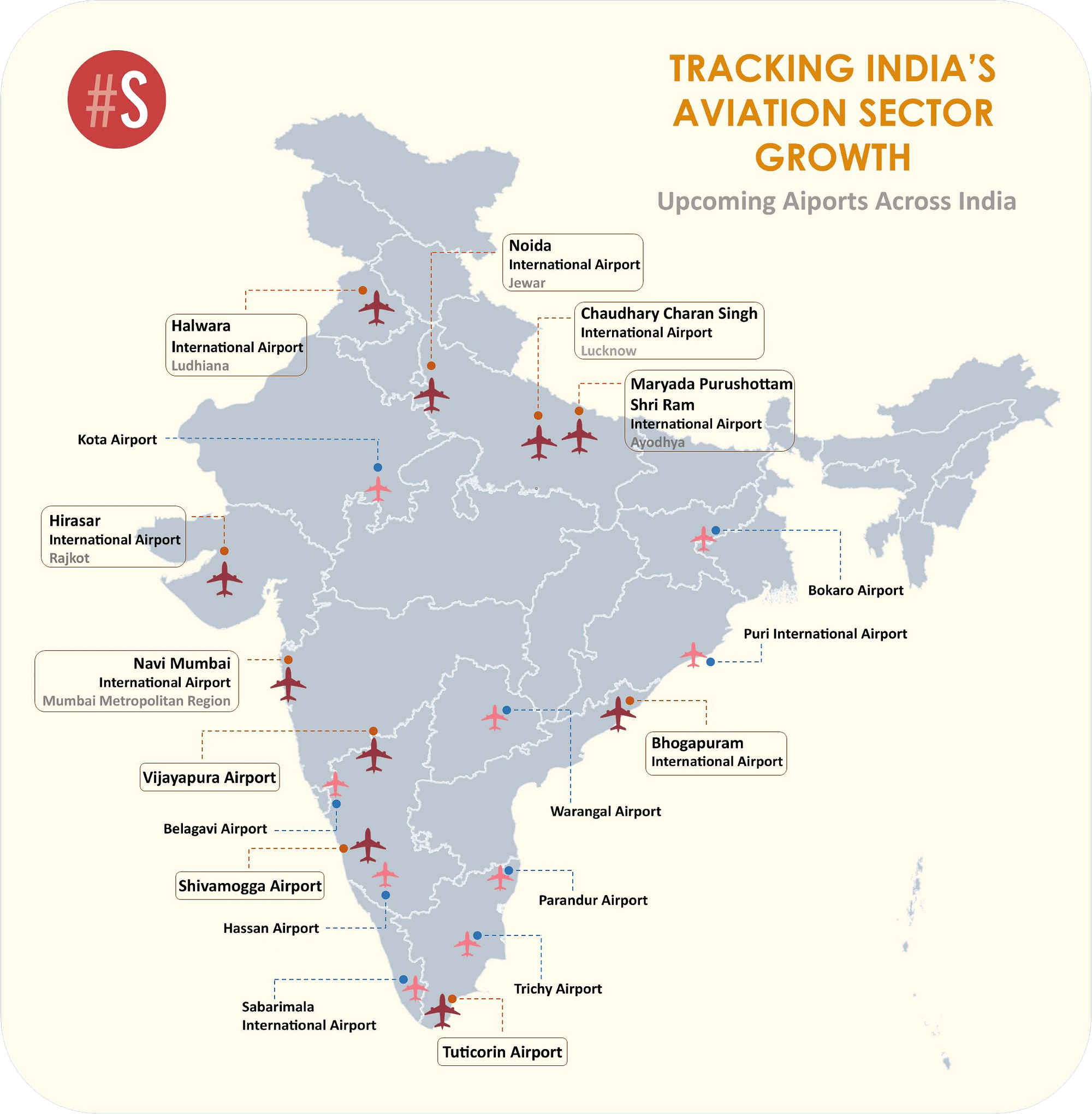
Noida International Airport
The upcoming greenfield airport at Jewar, Uttar Pradesh, is set to enhance domestic and international connectivity for Delhi-NCR, Noida, and Western Uttar Pradesh.
Upon completion, it will be India’s largest airport, which is being developed in four phases across 5,000 hectares — with five runways and two terminal buildings.
Construction work for the airport started in June 2021. It was awarded to Tata Projects by Zurich International Airport AG, which is the concessionaire for the proposed project.
The first phase, covering 1,334 hectares, is progressing on schedule and will be operational by the end of 2024. It will include a 4,000 m long and 45 m wide runway, a 40 m tall ATC tower providing a 360-degree view of the airport, and a passenger terminal spread over 34,000 sqm capable of handling 12 million passengers annually.

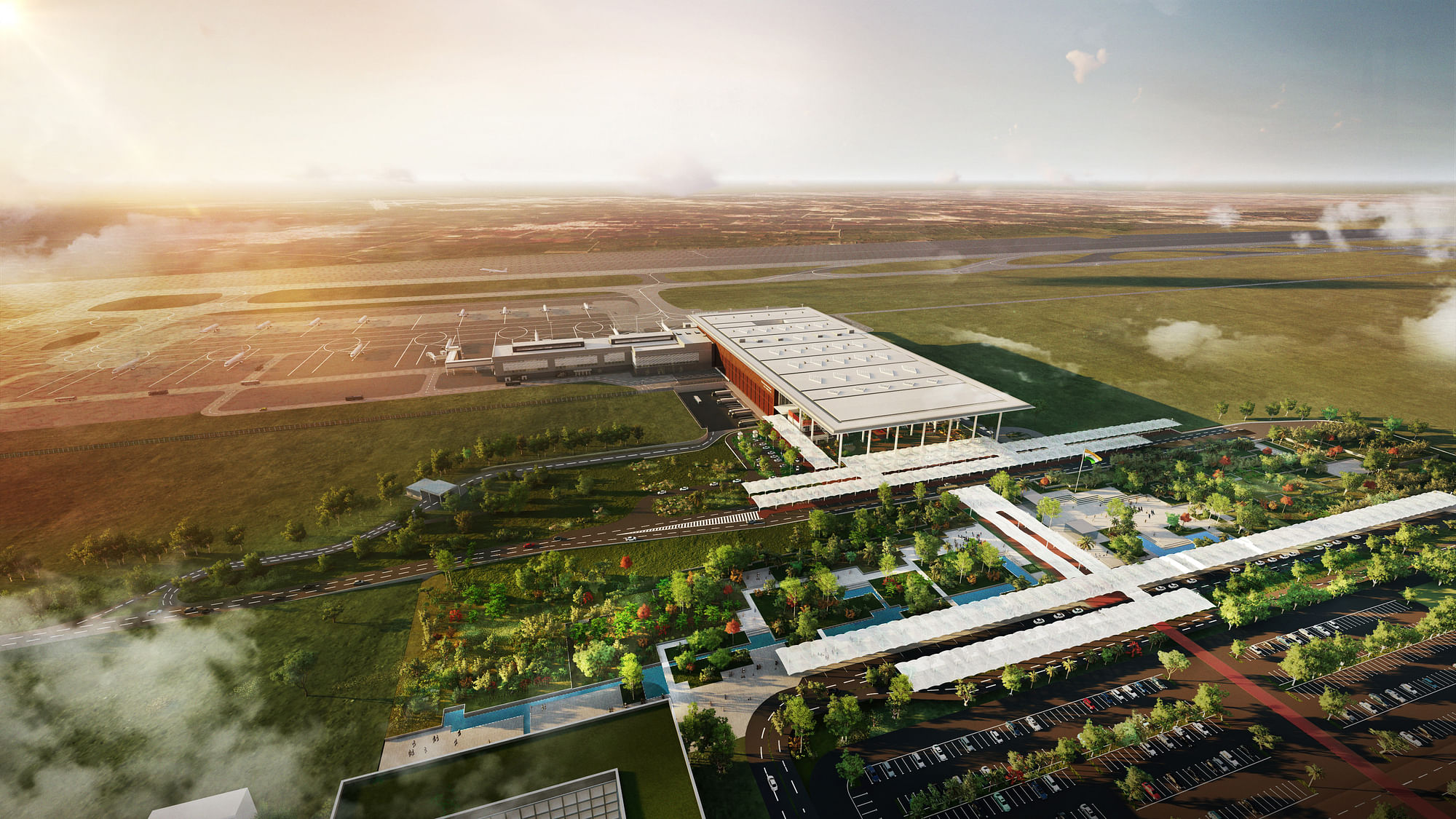
The facility will also feature a multimodal cargo hub, an international transit hub for Asia-Pacific countries, a Maintenance, Repair and Overhaul (MRO) facility, along with multimodal connectivity infrastructure ensuring seamless movement of passengers and cargo.
Navi Mumbai International Airport
Navi Mumbai International Airport (NMIA), the second airport in Mumbai Metropolitan Region (MMR), will address capacity constraints at the existing Chhatrapati Shivaji Maharaj International Airport (CSMIA).
The development is on track, and it is expected to open for air traffic by December 2024, as confirmed by Gautam Adani during his AGM speech.
The new airport will add 40 per cent more passenger handling capacity to the MMR region, significantly impacting demand-supply dynamics.
Conceived in 1999, the project’s construction began in 2017 and is being executed by Navi Mumbai International Airport Limited (NMIAL) — a special purpose vehicle (SPV) jointly owned by Adani Airport Holdings Limited (AAHL) and CIDCO in a 74:26 ratio.
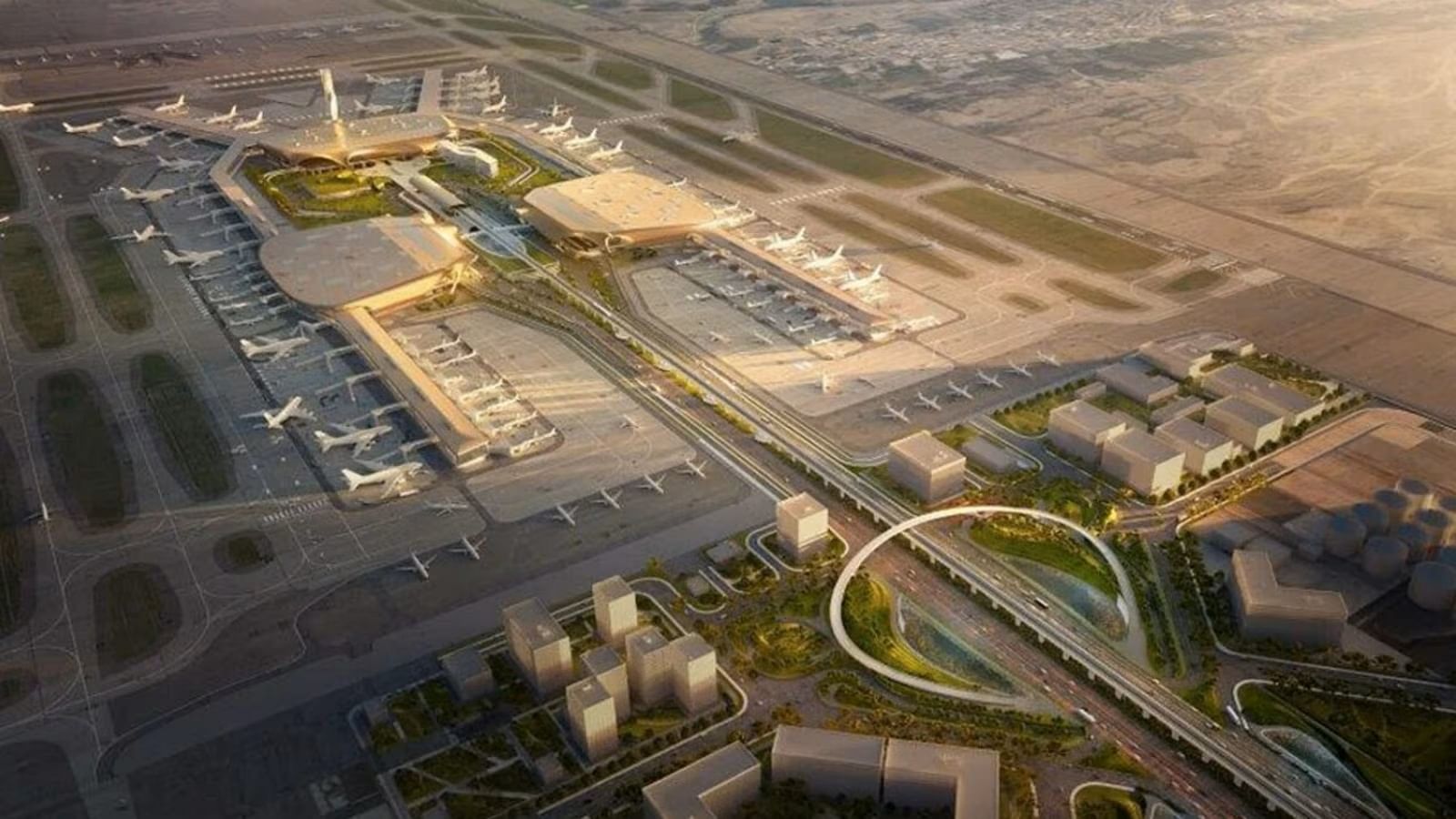
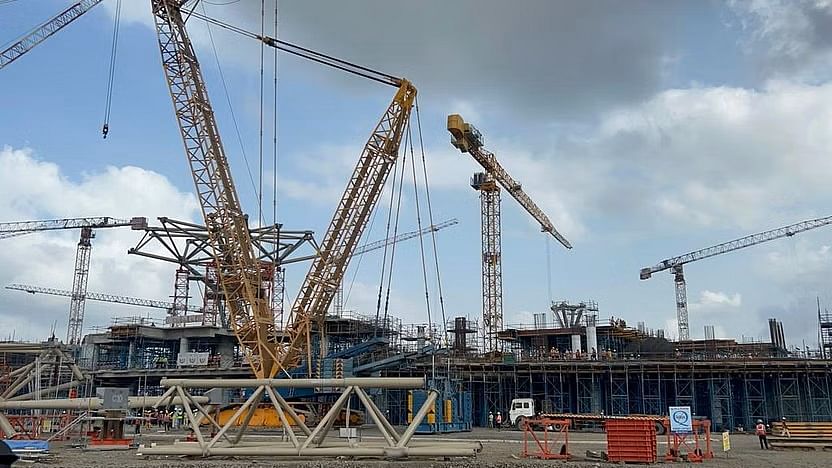
NMIA spans 1,140 hectares and features two runways, four terminals accommodating 42 aircraft, and parking space for 5,500 cars. Additionally, it will connect to the under-construction Mumbai Trans Harbour Link (MTHL), enhancing accessibility to the airport.
Developed in phases, the airport will handle minimum 60 million passengers per annum and 1.5 million tonne cargo per annum. The initial phase will focus on achieving a capacity of 20 million passengers per annum and 800,000 tonne per annum of cargo handling capacity.
Ayodhya International Airport
The Maryada Purushottam Shri Ram International Airport, situated eight km from the Ram Janmabhoomi Temple in Ayodhya, is a unique blend of tradition and modernity. Developed by the Uttar Pradesh government and the Airports Authority of India (AAI), the existing airstrip in Faizabad near Ayodhya is being transformed into an international airport.
The first phase of the airport is scheduled for completion in August of this year, anticipating the massive influx of pilgrims expected with the opening of the temple in early 2024.
The domestic terminal building will be centrally air-conditioned, spanning 6,000 sq m, and equipped with modern facilities, including three aerobridges, to handle 300 peak-hour passengers. Its annual handling capacity is expected to exceed 600,000 passengers.
The project covers a total area of 660 acres of land, with the current airstrip occupying 177.62 acres with an additional 170 acres handed over by the district administration to AAI for development.
The estimated cost for the first phase is around Rs 350 crore, and upon its completion, the airport will be capable of accommodating four Airbus A320-type aircraft.
Lucknow International Airport
Another ongoing project is the expansion of Chaudhary Charan Singh International Airport (CCSIA). The objective of the proposed advancement is to expand aircraft movements and handle increased passenger capacity.
Presently, the combined passenger handling capacity of the existing two terminals of the airport is planned for 43 lakh flyers over a year.
The terminals are, however, handling nearly 55 lakh flyers, which is 28 per cent more than the airport’s-built capacity.
This expansion aims to increase the annual passenger capacity from 43 lakh to 1.37 crore and the peak-hour passenger handling capacity from around 1,000 passengers per hour to up to 4,000 passengers per hour.
The new terminal will also introduce several new facilities, including a dedicated pick-up and drop-offs, and a planned skywalk at Terminal 3 to connect it with the metro station.
Lucknow Airport International Limited (LIAL), an Adani Group company and the body in charge of managing operations of the CCSI Airport.
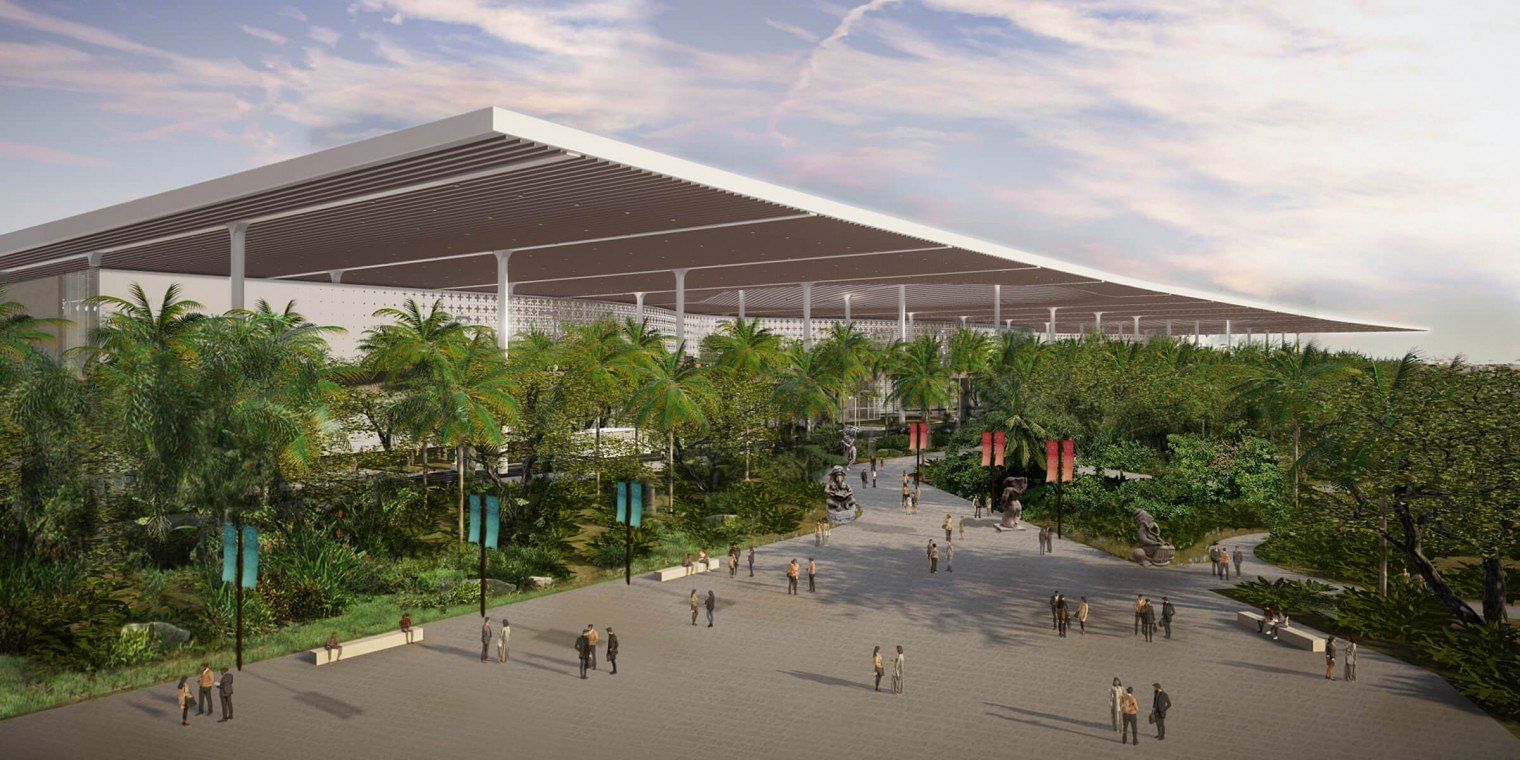
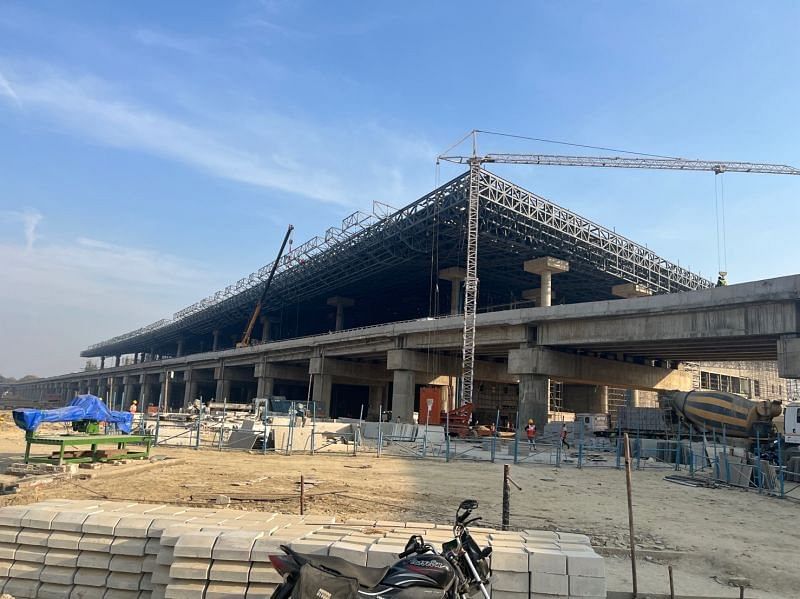
Halwara International Airport
The upcoming international airport in Halwara, situated 40 km from Ludhiana, is expected to be completed by September — following previous missed deadlines in 2022.
The construction work was divided into two parts — one involving internal roads, estate public health services, and campus lighting, and the other focused on constructing the airport terminal building at the Indian Air Force’s Halwara Air Station—one of the oldest frontline airbases.
As per the Punjab public works department (PWD), the terminal building is expected to be finished by the end of July.
Hirasar International Airport
The new greenfield airport, located approximately 30 km from Rajkot city on the Rajkot-Ahmadabad highway (NH-47), is making substantial progress with over 90 per cent of the development work already completed. A permanent terminal capable of handling nearly 1,800 passengers during peak hours will be ready by the year-end.
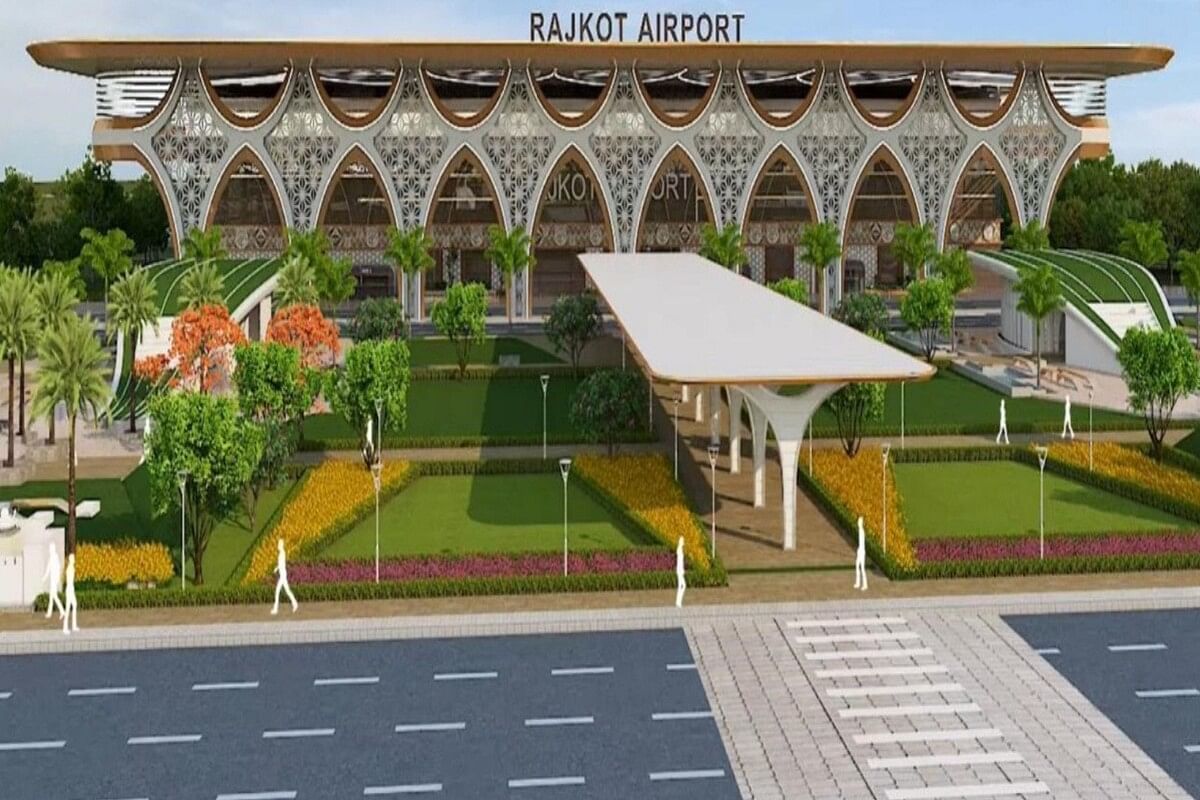
The airport has been designed with the longest runway in the state, with a length of 3.5 km — capable of accommodating Airbus-321 type of aircraft, with parking space for 14 aircraft on the apron. Additionally, it features a remarkable 700 m long water tunnel beneath the runway, the longest of its kind in Asia.
The airport project received green clearance from the Centre in 2017, with an estimated cost of Rs 1,405 crore. The need for this new airport arose as the existing one was deemed too small to meet the growing capacity demands.
Bhogapuram International Airport
Aiming to play a key role in the rise of tourism in the Northern Andhra region, Bhogapuram International Airport, a greenfield venture, will be developed in the state to serve six million passengers a year.
The foundation stone for the airport was laid by Andhra Pradesh Chief Minister Jagan Mohan Reddy on 3rd May, and it will be developed in three phases.
In the first phase, the airport will have a capacity of 6 million passengers per annum (MPPA), which will be increased to 12 MPPA in the second phase. The total capacity upon completion of the third phase will be 18 MPPA. The estimated cost of the project is Rs 4,592 crore.
Located about 50 km from Visakhapatnam in Vizianagaram district, the airport will cover an area of 2203.26 acres and feature a CAT-I enabled runway spanning 3,800 m, along with a 5,000 sq m cargo terminal.
GMR Visakhapatnam International Airport Ltd (GVIAL), a wholly-owned subsidiary of GMR Airports Ltd (GAL), is the concessionaire responsible for the development and operations of the international airport.
Shivamogga Airport
The new Shivamogga airport in Karnataka is set to start operations on 11 August. The airport was inaugurated by Prime Minister Narendra Modi on 27 February, and the Directorate General of Civil Aviation (DGCA) has granted permission for both commercial and private flights to operate from there.
Located in Sogane village, approximately 12 km from the city, the airport spans 663 acres of land and was built with an investment of Rs 449.22 crore. The domestic terminal building covers an area of 4,231.64 sq m and is equipped to handle 300 passengers during peak hours, offering modern amenities.
The airport is designed to accommodate Boeing 737 and Airbus A320 type aircrafts. The project was carried out in two phases — with the first phase focusing on runway, taxiway, apron, approach road, peripheral road, and compound wall construction. The second phase included the terminal building, ATC tower, and fire station building.
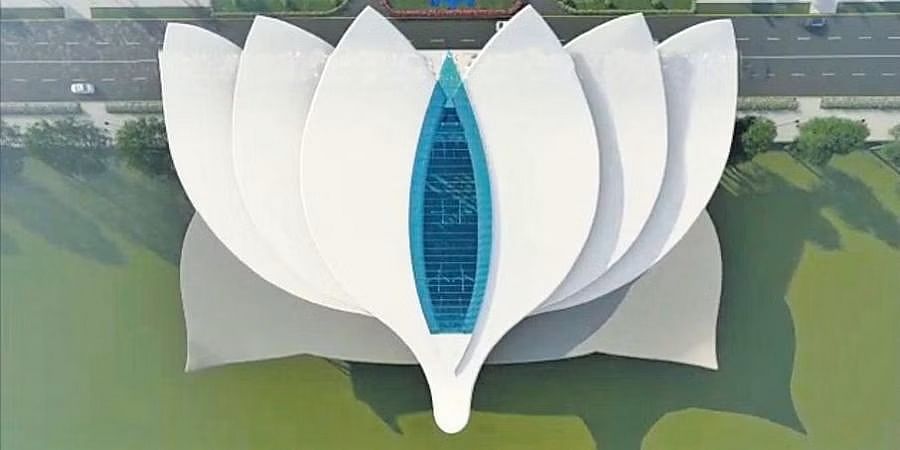
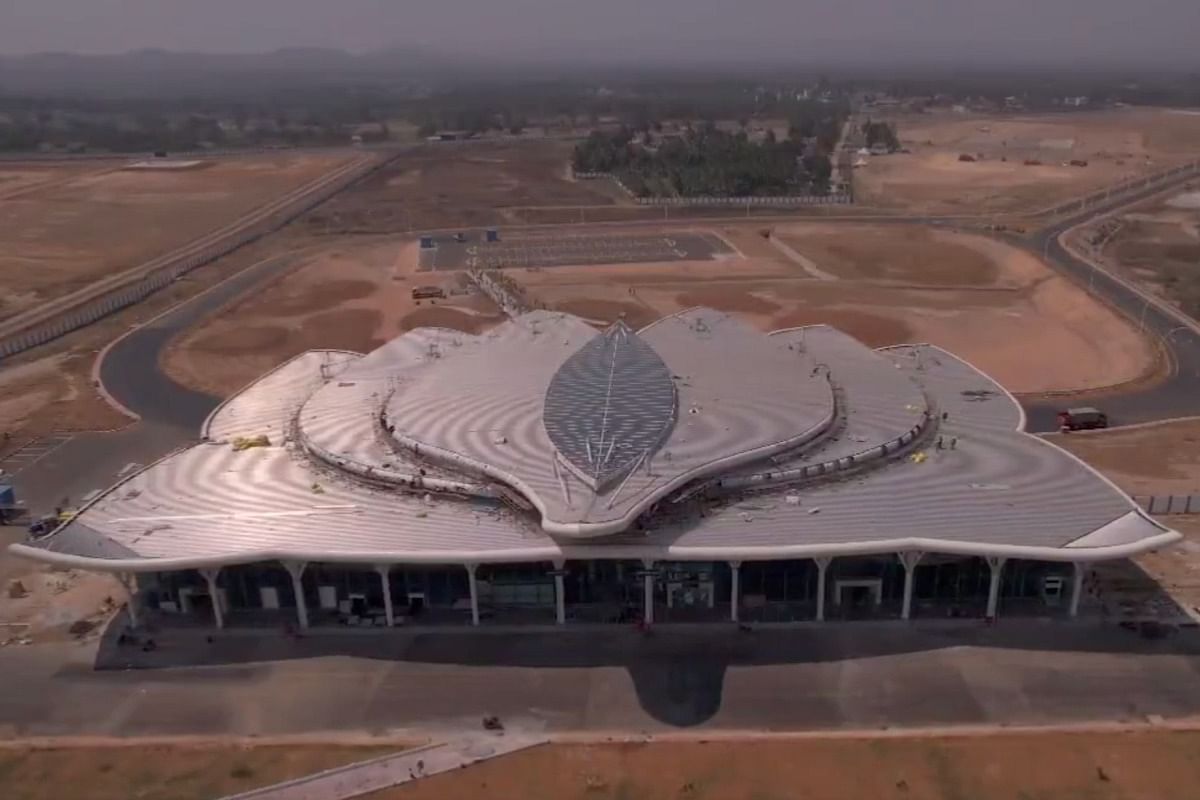
Tuticorin Airport
Tuticorin Airport in Tamil Nadu is undergoing extensive upgrades with an investment of Rs 381 crore to enhance services and cater to the increasing passenger traffic.
Operated by the Airport Authority of India (AAI), the upgrades include the construction of a new apron, terminal building, technical block, control tower, and fire station. The runway will also be extended to accommodate A321 aircraft operations.
The new terminal will cover an area of 13,500 sq m, providing ample space for passengers during peak times. Passengers can look forward to modern amenities, including two aerobridges, sufficient parking spaces, and a new approach road, all aimed at improving the overall passenger experience and ensuring smooth operations.
Once completed by December 2023, the airport’s peak-hour passenger handling capacity will significantly increase from 80 to 600.
Vijayapura Airport
Vijayapura Airport is being built by the Karnataka State Industrial and Infrastructure Development Corporation (KSIIDC) at the cost of Rs 220 crore.
The project site is located 15 km from the city on 727-acres of land in Madhabavi, located outside the city premises.
The airport was first approved by the JD(S)-BJP government in March 2007 but met numerous hurdles, and the project was halted in 2012. It was revived in 2021 by Yediyurappa government.
Currently, the airport project is in an advanced stage of construction, with over 80 per cent of the work completed.
The greenfield airport will feature a passenger terminal building, resembling the temples of Hampi, along with an aircraft apron. It will also have a 1.9 km runway designed to handle Airbus-320 aircraft.
Government’s Target Of Increasing Airport Infrastructure
Continuing to augment the airport infrastructure, the government aims to develop 100 airports by 2024 — under the UDAN Scheme, and expects to invest $1.83 bn in the development of airport infrastructure by 2026.
Ude Desh ka Aam Naagrik, or UDAN, is an initiative that identifies underserved air routes throughout the nation for improvement and greater regional connection. The programme also aims to make air travel accessible to all social groups by providing discounted flights.
Some other airports that are in line of proposals, approvals, expansions or greenfield construction stages for both domestic and international services across the country includes — Hassan Airport, Belagavi Airport in Karnataka, Puri International Airport (Odisha), Kota Airport (Rajasthan), Trichy Airport and Parandur Airport in Tamil Nadu, Chitrakoot Airport (Uttar Pradesh), Bokaro Airport (Jharkhand), Sabarimala International Airport (Kerala), Warangal Airport (Telangana).
The Hon’ble Civil Aviation Minister, Jyotiraditya Scindia, has said that India’s aviation industry is poised for further growth, and has set a target of increasing the number of airports in the country from 140 to 220 by 2025.
He has also emphasised that India has developed one of the most advanced privatisation programmes for airports in the world.


